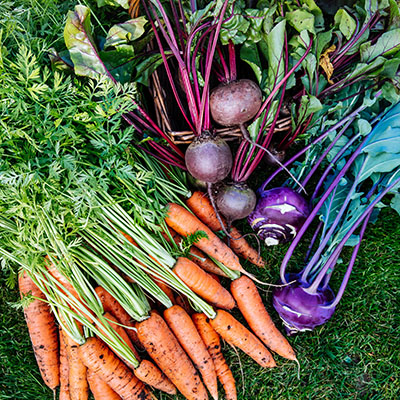By Andrew Mefferd
When a farm close to mine here in central Maine became the second one nationwide to offer U-pick hemp, I had to go see it. I thought it might be a timely idea for some GFM readers.
Here’s my logic: being the first year of nationwide legal hemp cultivation, there are likely a lot of farmers who grew the crop for the first time this year. And depending on how you handle it, hemp can be a time-consuming crop to dry and process (stay tuned for GFM’s guide to growing hemp early in 2019 for more on that).
So, it made perfect sense to me that farmers Ben Marcus and Taryn Hammer Marcus would turn to U-pick for taking some of the labor out of a labor-intensive crop. Since they do U-pick organic strawberries every year, they already had experience with the U-pick side of things. Here are the details in case you’ve got more hemp in your field than you can process this fall.
I had heard a lot about the Sheepscot General Store and Farm, but never been down to visit. This time of year, I don’t get out much, I’m usually pretty busy doing things on my own farm. Marcus and Hammer Marcus have run the Sheepscot General Store and Farm in Marcus’ hometown of Whitefield since 2011. It’s a 60-acre diversified farm with a store on the premises that I can best describe as a combination of convenience, natural foods and old-time variety store. The cozy shop offers a place for them to retail some of their own produce and other locally-sourced goods.
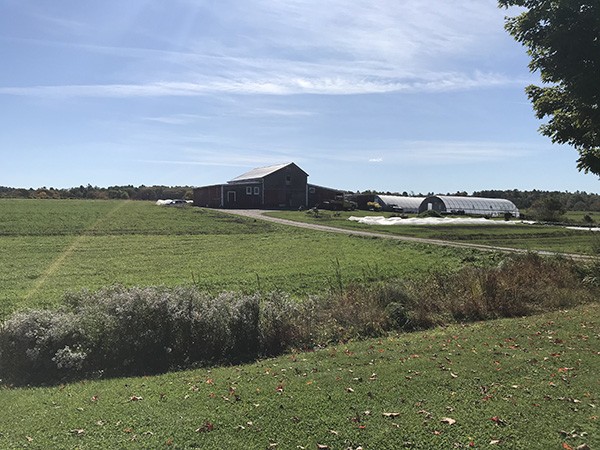
Ben Marcus was kind enough to talk with me for a few minutes while he pounded in signs to guide the public out to the right part of the field before their second-ever U-pick hemp night. They grew three acres of hemp this year, roughly 6,500 plants, in hopes that the public would pick as much as possible themselves.
AM: Would you tell me how you got the idea for U-pick hemp?
BM: Well we threw it out half-joking this winter, and then it was one of those ideas that we returned to and said, maybe that's not a crazy idea. Then we looked it up, and found there was one farm in Germany that did it last year. They were a strawberry farm for many years, and then their son came back to the farm and decided to do a hemp crop, and do U-pick.
So I said, well, it's possible. And we did our first run over a week ago with just our employees to do a mock U-pick. And during that, we tipped plants, weighed whole plants, bucked it down, figured out stem weights, did a lot of weighing and math and figuring, and tried to come up with a price, because there was no real good guide.
We were throwing out 50 bucks a pound just as starting point, and then we were getting calls. People were giving us a hard time for it, saying that at that price we were going to be undercutting the market. The price has just been inflated for so long.
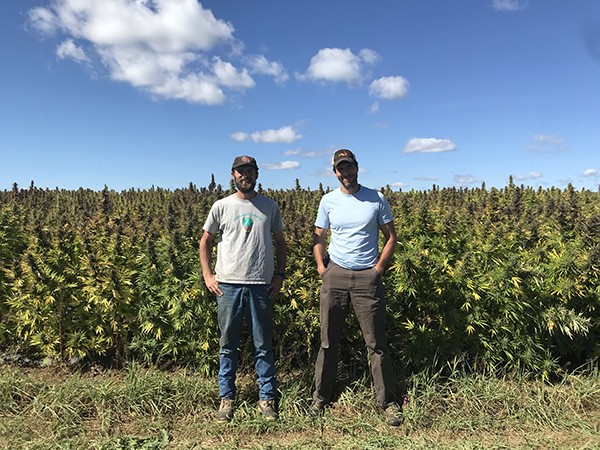
That's one of the things about this crop. The stigma is still with it, and the black market pricing is still with it. And I thought, you know what, I'm a row crop grower. I'm tooled up to be able to do this at scale. And you know, it wasn't anything to get these things in the ground and to grow them.
And then once harvest came, we realized it takes a lot of labor. We’ve already hung two thirds of our crop. On harvest days we've had a five-person barn crew, one person driving back and forth, one person harvesting, and then me running around, making sure all the new systems that we sort of invented are happening. And we've had to do some repairs and changing along the way. But it worked out pretty well so far. It's just so labor intensive.
In any case, I veered off how we figured out our pricing structure. So we figured the main stalk is about 10% of the weight of the plant. The tertiary stems are 20%. So you’ve got your flowers and foliage is 70% of the plant.
And so, we were trying to price based on the going rate of dry flower at $200 a pound. So that's where we came up with 25 bucks a pound for whole plant. And then we are doing $35 a pound for branches. We're dividing off areas of the field for branch harvesting, because we don't want to just let people go out and just take tops. [Editor’s note: the flower is the most desirable part of the hemp plant for processing into CBD products. And the top/main stem of the plant is the prime part of the plant as far as density of flower vs. stem].
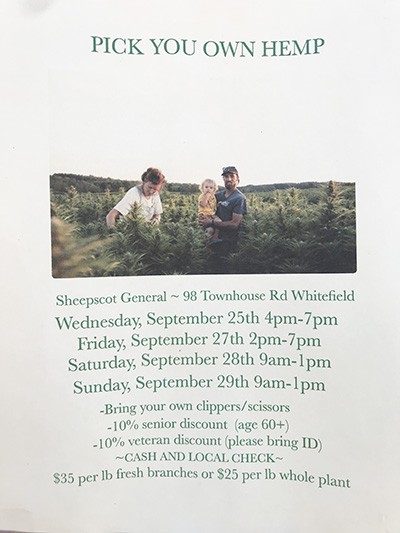
AM: That was going to be one of my biggest questions for you. Because I think many growers’ main complaint about U-pick is that people go out and make a mess of the crop. And so I wanted ask you, how you’re going to keep people from making a mess of your field.
BM: So we went out and topped a section of the field. And that became the area for branches. It still has big beautiful flowers, so people are going to be able to go in there, and they're going to cut a branch back to the main stalk, and it's a little bit more expensive at $35/pound than the whole plant which is $25/pound. We're trying to incentivize people to take whole plants. That's ideally what we want.
So for my strawberry crop, I usually have two people in the field. It's very closely monitored because we’re a small farm, and we have a lot of traffic. So it's really important to have good organization in my strawberry field, which I've learned from years when I wasn't as diligent about that. What happened was people [left a lot of berries in the field].
So this takes way more management. We're holding people's hands, because people don't know even know what to do. So many people show up, because it's the shock value of it, I think, which is what we were going for.
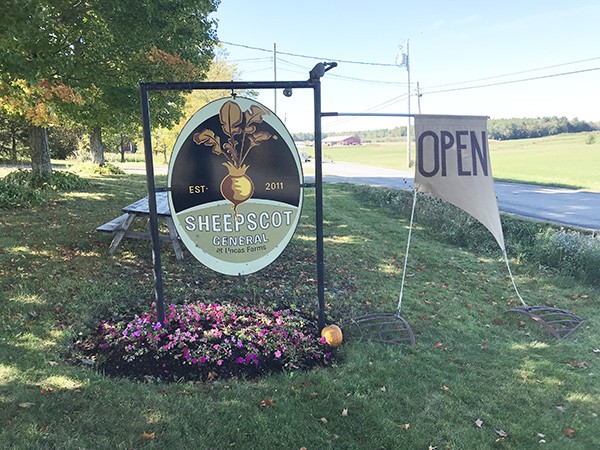
We've wanted to advertise, we wanted to get our name out there. But we also love the U-pick part of our business. It brings a lot of people into the store. It brings a lot of people here, period. So the farm is really well suited to pick your own. We have a lot of parking. It's a nice place to be. So it sort of lends itself to that. And you know, we just also like the idea that this plant is the people's medicine, and there's so much hype around it, and just trying to reeducate. Because I feel like people have been sort of misled too, in that it has to be in this expensive extracted form to be useful.
So we're trying to really teach people. You can freeze this stuff, you can dry it, you can just use coconut oil. You can do a cheap process and have a lot of medicine. We've been using it and sharing it with our family and friends.
So for the U-pick we're going to have [set hours], and five field people plus two. Taryn and I are going to be checking people out, and dealing with the money interaction. Because there's sticker shock for sure. At $25 a pound, if you get a small plant you’re talking anywhere from 75 bucks up to some $400 plants out there.
I keep reminding myself and other people that there's a lot on a plant. So we're just putting it out there, and it's going to be a better deal than they would get if they were to go buy dried, cured flower, because they're going to have to do the work. But that's why they're getting a lower cost. If you went to a dispensary to get a pound of dried, cured flower, it would probably run you ... I've been hearing prices from 7 to $800, [for dried, trimmed flower] from dispensaries.
AM: I think this is a neat way for someone who's not a grower to come get a plant and do their own processing. So with that many people in the field, it sounds almost like guided harvesting. Are you guys going with each person and helping them cut? Or do you give them some loppers and tell them to go get what they want?
BM: There are some people who require more handholding than others. I think this weekend's probably going to be a little much. Probably be a little hectic. But, it's a quick harvest.
It ain't like picking strawberries. You go out and clip a tree, and bring it to the tent and weigh it. Or if they just want branches, then they cut branches. I do feel a little uneasy about the price still, honestly.
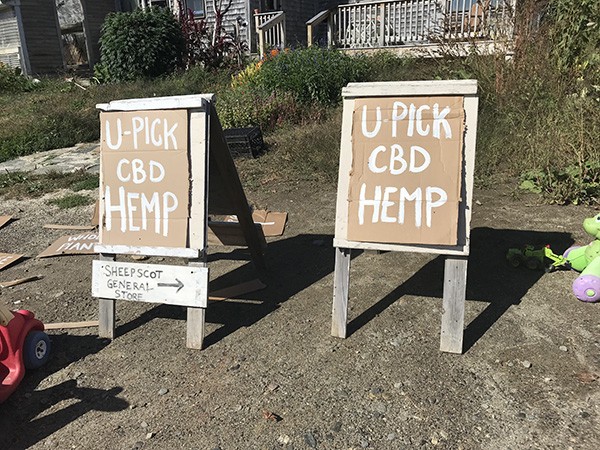
AM: Do you mean, it's too high or you just aren't sure what it should be. Because there's nobody else doing this. You had to come up with your own pricing structure.
BM: It's wet. It's 70% water. It's going to take five pounds to make a pound.
AM: So at a price of, let's say $25 a pound for a whole plant, they would buy about $125 in fresh plant to get a pound of dried. Or at the branch price of $35/pound, they would pay $175 to get a pound of dry flower.
BM: And you have to do a lot less work. So really, theoretically you'd be making double with U-pick, because you're not paying employees to dry it. Because I'm not doing any work. But it's the same thing with U-pick strawberries essentially. There's an experiential part of this, but there’s the labor that we're employing to manage the U-pick too. You have to take that into account. But it is hard. There's some sticker shock. Most of the people on Wednesday were thought this is a great deal. We're hoping somebody wants to come and wheel and deal, and take a hundred plants and we'll work with them.
AM: It wouldn’t be for me. I don't really want everybody tromping out to my back field. Our hemp is in the middle of our farm. It's an idea that wouldn't make sense everywhere. And I can't wait to check in with you at the end of the season to see how it went. What is your plant spacing like?
BM: I did 40 inch in-row, five feet between rows. That's the spacing of the water wheel transplanter we always set up. I wanted 48 inches. I thought it was close. When they were just vegetative bushes, I was like, oh my, these things are way too close. I had so much anxiety at that point. But once they start flowering they stopped getting bigger.
AM: Well my last question about the hemp, and I'll get out of your hair. I just want to ask. I know you just started doing it, but were you happy with people's reactions when they came out? But so far, early in the process, were they happy? Were you happy with them?
BM: Absolutely. Yeah. I think 95% of the people who came out were happy. So out of 50...how many people does that leave? A half a person?
It's uncomfortable when people come out, and they start doing the math in their heads and they're like, wow, you're getting rich right now. And it's like, we got a long ways to go to break even. I estimate we’ve got $50,000 invested in this.
We’re offering senior discounts, 60 and over, and veterans get 10% off. That's just the most of the people that we had out here.
I hope it's something that stays. It's going to be taken over by big Ag. It already is. But I think it's a crop that is really conducive to this small farm and should be a good crop that can be rotated on small farms.
AM: I think that's a challenge for people like us, is we know there's big pharmaceutical companies and basically anybody else, trying to figure out how they can get as much profit as possible out of hemp. And it's our challenge to figure out how to keep some of it for small farmers.
BM: I would just remind people that it's a bio accumulator, when they go and they turn roundup corn fields into hemp. That's not good medicine. Maybe they can use it to remediate the soil, but I wouldn't make medicine out of it. I feel like it's a crop that you shouldn't be able to cheat on. You got to have good practices, if you're growing this crop for medicine.
Andrew Mefferd is the Editor and Publisher of Growing for Market. He farms in central Maine.

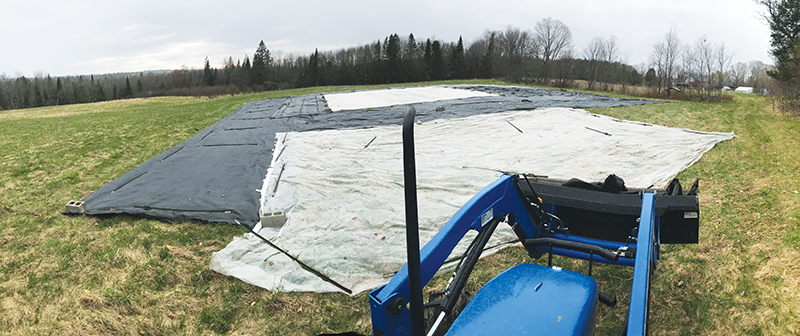 In
In 
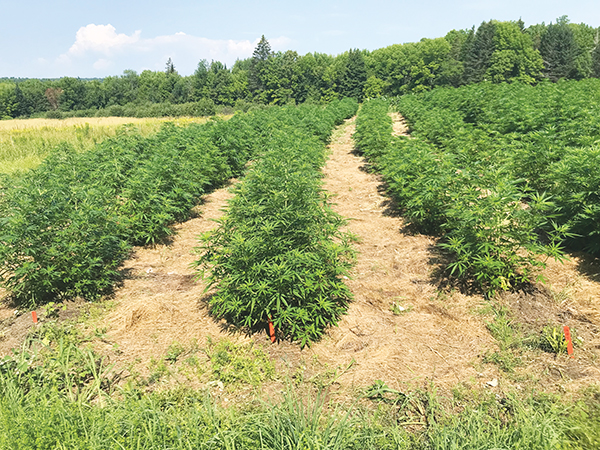 How I accidentally became a hemp farmer
How I accidentally became a hemp farmer